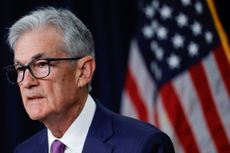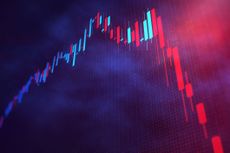5 Reasons Bull Markets End
We tell you the signs to look for and what they’re signaling now.

History never repeats but often rhymes. So when it comes to the demise of bull markets, we can, to borrow the immortal line of Captain Renault in Casablanca, round up the usual suspects. Often, the factors below are found at the scene of the crime (the start of a bear market). None appears to be an imminent threat yet, but it pays to be on the lookout for these bear-market bellwethers.
SEE ALSO: 7 Cheap Stocks the Market Left Behind
1. Higher inflation
Spiraling prices reduce consumer buying power, which accounts for some 70% of U.S. economic activity. Inflation also whittles the value of financial assets. Think back to the mid 1970s, when oil (and wheat) price shocks bumped consumer prices to double digits in 1974. Inflation vacuumed money out of financial assets and into gold, real estate and other hard assets, and Standard & Poor’s 500-stock index lost 48% of its value between January 1973 and October 1974. (All figures for bear-market declines exclude dividends.)
Today: Inflation remains so subdued that fears of deflation periodically surface. Stripping out food and energy costs, the inflation rate has been declining since the spring of 2012. Most economists expect inflation to creep higher eventually, in tandem with the improving economy. Still, Kiplinger’s expects an inflation rate of just 1.8% in 2014, up slightly from 1.5% in 2013, and well within the Federal Reserve Board’s comfort zone.

Sign up for Kiplinger’s Free E-Newsletters
Profit and prosper with the best of expert advice on investing, taxes, retirement, personal finance and more - straight to your e-mail.
Profit and prosper with the best of expert advice - straight to your e-mail.
2. Rising interest rates
Inflation is a serious threat to bull markets, but the cure can also be toxic when the Federal Reserve Board fights back with stingier monetary policies and higher interest rates. Rising rates pull money from stocks into fixed-income investments. And there’s a risk that central bankers will overshoot, choking off economic growth. When Fed chairman Paul Volcker declared war on inflation in 1979, he hiked a key short-term rate from 11% to a peak of 20% in 1981. Investors saw stock prices drop 27% in the bear market that began in 1980; by 1981, the economy was in recession.
Today: Although inflation remains minimal, the Fed, in response to a slowly improving economy, has begun unwinding its massive bond-buying program aimed at pushing long-term rates lower. And rate forecasters expect the Fed to hike short-term rates beginning in late 2015 or early 2016. Whether rising rates are the death knell to a bull market depends on timing and context, says Jim Paulsen, chief market strategist at Wells Capital Management. Are yields rising along with confidence in an improving economy? Or are they rising because the economy has reached the overheated stage and inflation is a threat? Paulsen looked at nine periods when bond yields were on the upswing but confidence was rising, too. In eight of the nine, stocks posted double-digit gains.
3. Geopolitical instability
There’s nothing like saber-rattling to rattle the stock market. The 1990 bear market began just before Iraq’s invasion of Kuwait, taking the S&P down 20%. In the year following the terrorist attack on the U.S. in 2001, the S&P fell 17%.
Today: Stocks reeled in March as Russia invaded Ukraine, and the unsettled region could lead to further market upsets. But in most cases, geopolitical crises don’t bring on the bear, says Jim Stack, of InvesTech Research, who looked at the market’s reaction to 11 events ranging from Germany’s invasion of France in 1940 to Operation Iraqi Freedom, in 2003. More than half the time, the market ended the first month following the event with a decline. But in eight of 11 cases, the S&P 500 more than recovered any losses by the six-month mark. “The current Ukraine crisis doesn’t change the outlook for the market,” Stack says.
4. Recession
Only one recession since 1929 has not been associated with a stock-market decline. (The lone exception: a brief economic contraction in 1945.) It’s not surprising that deteriorating economic conditions and bear markets go hand-in-hand, considering the close connection between corporate profits and share prices. But bear markets and recession don’t always pair up. Six bear markets, including the 1987 decline, were not accompanied by recessions—hence the quip from the late economist Paul Samuelson that the stock market “has called nine of the last five recessions.”
Today: Recession is not a near-term threat. A recent, sharp increase in the Conference Board’s index of leading economic indicators, a forecasting tool, portends a healthy growth for the second half of 2014, despite weather-related volatility. Growth in gross domestic product could approach 3% for 2014. But timing here is tricky. Although the lead time between peaks in the index of leading economic indicators and recession hasn’t been less than eight months in 40 years, it’s also true that stock market peaks lead recessions by an average of six months.
5. Overvaluation
Markets can stay even ridiculously overvalued relative to the usual measures of corporate earnings, sales or cash flow for a long time. But eventually, something punctures the bubble, and the 1990s dot-com craze is a spectacular example. In 1999, the technology-heavy Nasdaq Composite index traded at 178 times estimated earnings—and plenty of stocks didn’t even have earnings, engendering talk of a “new paradigm” for these tech darlings. Turned out the new paradigm included some cooked books, a bunch of bankruptcies and a lot of failed expectations, and ended with a 79% decline in the Nasdaq; 49% in the broader S&P 500.
Today: Stocks are no longer cheap, that’s for sure, and run-ups in biotech and Internet stocks are enough to give anyone pause. But with the S&P 500 trading at 16 times estimated 2014 earnings, the market overall is certainly nowhere near prior peak valuation levels. The average P/E on the S&P 500 at market peaks going back to 1956 is just over 18 times earnings, and the P/E rose to 27 times earnings in 2000. What’s more, analysts expect earnings to increase 7% in 2014 and another 10% in 2015.

To continue reading this article
please register for free
This is different from signing in to your print subscription
Why am I seeing this? Find out more here

Anne Kates Smith brings Wall Street to Main Street, with decades of experience covering investments and personal finance for real people trying to navigate fast-changing markets, preserve financial security or plan for the future. She oversees the magazine's investing coverage, authors Kiplinger’s biannual stock-market outlooks and writes the "Your Mind and Your Money" column, a take on behavioral finance and how investors can get out of their own way. Smith began her journalism career as a writer and columnist for USA Today. Prior to joining Kiplinger, she was a senior editor at U.S. News & World Report and a contributing columnist for TheStreet. Smith is a graduate of St. John's College in Annapolis, Md., the third-oldest college in America.
-
 Stock Market Today: Nasdaq Pops as Semiconductor Stocks Soar
Stock Market Today: Nasdaq Pops as Semiconductor Stocks SoarThe main indexes closed higher Monday after a bull call on Micron boosted several large-cap chipmakers.
By Karee Venema Published
-
 Having Enough Money for Retirement Still a Top Concern, But Moods Are Changing
Having Enough Money for Retirement Still a Top Concern, But Moods Are ChangingA new Gallup poll shows Americans are still concerned about having enough money for retirement, but there are some changes from last year.
By Alexandra Svokos Last updated
-
 Stock Market Today: Nasdaq Pops as Semiconductor Stocks Soar
Stock Market Today: Nasdaq Pops as Semiconductor Stocks SoarThe main indexes closed higher Monday after a bull call on Micron boosted several large-cap chipmakers.
By Karee Venema Published
-
 Stock Market Today: Stocks Soar on Apple Buyback News, Jobs Data
Stock Market Today: Stocks Soar on Apple Buyback News, Jobs DataThe main indexes rallied hard to end the week thanks to Apple's $110 billion stock repurchase plan and a big April payrolls miss.
By Karee Venema Published
-
 Stock Market Today: Stocks Sizzle Ahead of Apple Earnings, Jobs Report
Stock Market Today: Stocks Sizzle Ahead of Apple Earnings, Jobs ReportThe Nasdaq outperformed in a strong day for stocks thanks to Qualcomm's post-earnings pop.
By Karee Venema Published
-
 Stock Market Today: Stocks Pop Then Drop After Fed Meeting
Stock Market Today: Stocks Pop Then Drop After Fed MeetingStocks went on a roller-coaster ride after Fed Chair Powell said interest rates were likely at a sufficiently restrictive level.
By Karee Venema Published
-
 Stock Market Today: Stocks Sell Off Ahead of Fed Decision
Stock Market Today: Stocks Sell Off Ahead of Fed DecisionStocks sold off sharply Tuesday as anxiety set in ahead of Wednesday's policy statement from the Federal Reserve.
By Karee Venema Published
-
 Stock Market Today: Markets Post Broad-Based Gains Thanks to Mega-Cap Tech
Stock Market Today: Markets Post Broad-Based Gains Thanks to Mega-Cap TechStocks get help from a couple of laggard Magnificent 7 stocks.
By Dan Burrows Published
-
 Stock Market Today: Markets Soar Amid Strong Earnings for Big Tech
Stock Market Today: Markets Soar Amid Strong Earnings for Big TechEquities ended the week on an up note thanks to some of the market's biggest names.
By Dan Burrows Published
-
 Stock Market Today: Markets Tumble Amid Slower Economic Growth and Rising Prices
Stock Market Today: Markets Tumble Amid Slower Economic Growth and Rising PricesDisappointing readings on GDP and inflation helped tank equities.
By Dan Burrows Published